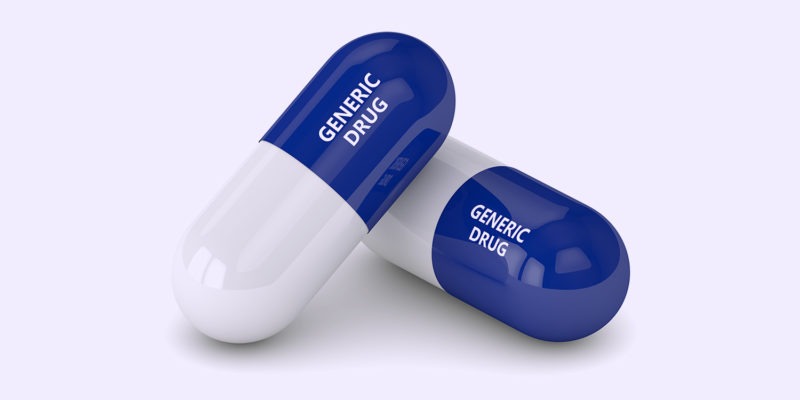US Onshoring Push for Generic Drugs
FDA has introduced a new pilot program to prioritize abbreviated new drug applications for generic drugs that use US-based manufacturing and testing, the latest in a series of moves by the Administration to incentivize US-based manufacturing.
By Patricia Van Arnum, Editorial Director, DCAT, pvanarnum@dcat.org
New pilot program for generic drugs
As part of an overall policy goal of the current Administration to increase US-based manufacturing, the US Food and Drug Administration (FDA) is launching a new pilot prioritization program for the review of abbreviated new drug applications (ANDAs) for generic drugs that aims to spur and reward investment in US drug manufacturing and research and development by providing faster reviews for generic-drug companies that test and manufacture their products in the US.
“Ensuring that Americans have access to high-quality, safe and effective generic medicines is critical to public health,” said Dr. George Tidmarsh, M.D., Ph.D., Director of FDA’s Center for Drug Evaluation and Research, in an October 3, 2025, press statement. “Overreliance on foreign drug manufacturing and testing creates risks both to national security and patient access and undermines investments in US research, manufacturing and production. It also slows down reviews and costs taxpayers more money as these foreign research and testing sites must be inspected by FDA, and foreign inspections take more time to prepare for and are more expensive to conduct than domestic inspections.”
Under this pilot, ANDA applicants who conduct any required bioequivalence testing in the US and whose products are made in the US using exclusively domestic sources for active pharmaceutical ingredients (APIs) are eligible for priority review. Applicants can request this priority review by following the procedures outlined in FDA’s Manual of Policies and Procedures (MAPP) 5240.3, Prioritization of the Review of Original ANDAs, Amendments, and Supplements and referencing this pilot program as the basis for prioritization. Applicants should provide information with their priority review request to demonstrate that their ANDA qualifies for the pilot based on three elements: (1) that either the pivotal bioequivalence testing was conducted in the US or that the ANDA qualifies for a waiver of bioequivalence testing; (2) that the finished dosage form manufacturer is located in the US; and (3) that the API supplier is located in the US.
Other policy moves to onshore US drug manufacturing
The ANDA pilot is the latest in a series of moves by the current Administration to onshore/reshore drug manufacturing to the US. Late last month (September 30, 2025), FDA hosted a public meeting titled “Onshoring Manufacturing of Drugs and Biological Products” to gain feedback on FDA’s proposed PreCheck program, which introduces a two-phase approach to accelerate the establishment of new pharmaceutical manufacturing facilities in the US and strengthen the domestic pharmaceutical supply chain. The meeting also sought input on additional considerations that may help overcome current challenges faced by industry to onshoring the manufacturing of pharmaceuticals, including APIs, finished drug products, and biological products, as well as other ideas and options within the bounds of FDA’s statutory authority that could facilitate such onshoring of manufacturing. FDA also established a public docket to gain further public comments, which are due by October 30, 2025.
FDA PreCheck program
FDA proposed the FDA PreCheck program in August (August 2025) following an Executive Order issued by President Donald Trump in May (May 2025) that called for streamlining FDA review of pharmaceutical manufacturing facilities in the US, enhancing the inspection process of foreign drug-manufacturing facilities, and streamlining permitting of manufacturing facilities by the US Environmental Protection Agency.
The first phase of the FDA PreCheck program, the Facility Readiness Phase, provides manufacturers with more frequent FDA communication at critical development stages, including facility design, construction, and pre-production. This phase also encourages companies to provide comprehensive facility-specific information through a Type V Drug Master File (DMF), such as site operations layout and description, Pharmaceutical Quality System elements, and Quality Management Maturity practices. This facility-specific DMF can be incorporated by reference into a drug application as appropriate.
The pre-operational review of the Facility Readiness Phase consists of two main components as outlined below:
- Enables manufacturers to seek FDA feedback, as applicable, at critical facility development stages, including facility design, pre-construction, construction/equipment installation and qualification, and pre-production phases; and
- Provides manufacturers with insight into whether their planned facility and manufacturing operations as designed are likely to comply with cGMP requirements.
In addition, under the Facility Readiness Phase, companies will be able to provide FDA with manufacturing facility information provided via a Type V DMF. The types of information and the benefits of being able to supply this information are outlined below:
- Offer industry an opportunity to provide FDA with a comprehensive master file that contains facility-specific information including, for example, site operations layout and description found in a Site Master File, Pharmaceutical Quality System elements, and Quality Management Maturity practices;
- Help FDA to provide timely feedback on consistency and effectiveness of quality procedures to reduce the risk of cGMP deficiencies that could compromise product quality, patient safety, and application approval.
- Serve as a living document that is updated throughout the facility lifecycle that, as appropriate, can be incorporated by reference into a drug application, and can be leveraged to streamline facility assessments during application reviews.
The second phase of the FDA PreCheck program, the Application Submission Phase, centers on streamlining development of the chemistry, manufacturing, and controls (CMC) section of the application through pre-application meetings and early feedback with FDA. The specific benefits of the program are:
- Provide applicants and their manufacturers the opportunity to give FDA advanced awareness of facility and manufacturing strategies for specific drugs in forthcoming applications while enabling earlier assessment and inspection activities within the review cycle;
- Enable FDA to provide CMC feedback on anticipated data or logistical needs to support timely review and inspection processes; and
- Allow FDA to accelerate quality element assessments for applications from new US facilities through early facility engagement and frontloaded assessment activities.
Redirecting pharmaceutical supply
The impetus for these moves is to address an imbalance between domestic and foreign manufacturing of pharmaceuticals marketed in the US and to increase US-based domestic manufacturing. According to information from FDA, as June 2025, approximately 53% of brand drug products and 69% of generic drug products have at least one manufacturer outside of the US. Additionally, as of 2025, 9% of API (Type II) DMF holders are in the US, 22% are in China, and 44% are in India.






